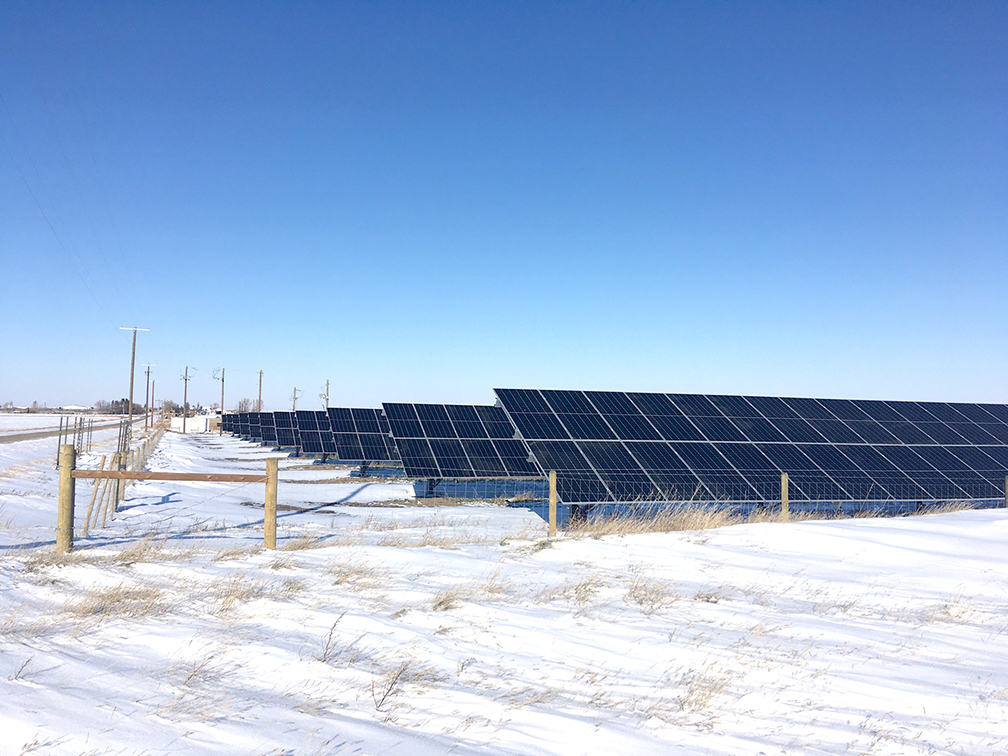Current Temperature
-24.6°C
RenuWell converts stagnant land into a viable energy source
Posted on February 15, 2024 by admin Westwind Weerkly News file photo.
Westwind Weerkly News file photo.By Cal Braid
Southern Alberta Newspapers
Local Journalism Initiative Reporter
Alberta’s landscape is peppered with vacant oil and gas wells that are veritable dead zones. The sites no longer produce energy and the land can’t be used otherwise until the sites are cleaned up and reclaimed. Keith Hirsche, founder and president of RenuWell Energy Solutions, was the featured speaker at a recent webinar and he spent the hour-long virtual session taking attendees through the objectives and outcomes of his energy project. RenuWell converts abandoned oil wells into solar ‘farms.’ It cuts remediation and costs substantially and allows Alberta to increase its solar capacity without infringing upon productive farmland.
Hirsche grew up primarily in Taber and said that in those years the M.D. was a fairly large producer of oil. As of 2022, it had fallen to 25th in the province. Over the past 25 years the regional energy industry has been in a steady decline. With a graph, he projected the line further and said most fields will be at the end of their life by about 2027. “This is a major impact to the Taber area and a lot of municipalities in the same situation,” he said. “There are roughly 10,000 wells in the region and only about 1,800 of those are still producing. The majority are either suspended or abandoned but not reclaimed.” The average productivity of those wells is about four and a half barrels per day, per well.
In the 1990s, “A lot of the multinational companies sold their conventional fields to smaller companies, and many of these smaller companies really couldn’t manage their declining fields and really weren’t prepared for the liabilities which came with those fields. They didn’t have the capacity to clean them up as quickly as they committed to.”
Brian Peers, manager of municipal lands and leases at the M.D, was at the webinar, and he spoke for a few minutes, filling in some details. He said, “(Keith) came to us with solutions to problems we were currently having already, so it was sort of a win-win. We were getting calls from our residents and landowners. Smaller companies were in deep decline and were going bankrupt, leaving messes and unclaimed liabilities out on the landscape. People weren’t getting paid for oil and gas rentals and the municipality wasn’t receiving any taxes from those companies that had gone bankrupt. It’s a substantial impact on municipalities and how they operate when they don’t receive those linear taxes from the oil companies.” Hirsche confirmed that some rural municipalities have been dependent on oil and gas taxes for 50 per cent of their operating revenue. Peers said the M.D. has about 600 wells on its 80,000 acres of land.
The RenuWell project was founded on $2.3 million from the Municipal Climate Change Action Centre and Municipal Community Generation Challenge. IRRICAN Power contributed $1.5 million and is the owner and operator of the solar sites. Skyfire Energy built 1.45 megawatts (MW) of solar on two orphan well sites in the M.D. of Taber for a pilot project. Hirsche works with Iron and Earth, a non-profit that creates “pathways to opportunities in the net-zero economy for fossil fuel workers, indigenous peoples, and their communities,” according to its website. Together with Medicine Hat College, it developed and delivered a training program for oil and gas and indigenous workers.
In 2020, RenuWell received funding to begin those two pilot projects in the M.D. A renewable energy training program at the two sites allowed workers to gain skill at installing solar fields. At its Fincastle site, half a megawatt of solar power was installed in late 2022; then in March of 2023 power was activated for the first time. Across both pilot sites, RenuWell saved eight acres of farmland and added one and a half megawatts of solar power to Alberta. That’s enough for 90 quarter section pivot irrigation systems to irrigate more than 12,000 acres.
RenuWell’s stated objectives were listed as follows:
-To increase distributed solar generation to support seasonal irrigation power requirements.
-To conserve land for agriculture.
-To accelerate oil field reclamation.
-To generate revenue for the M.D. and irrigation districts.
Hirsche identified some outcomes as proof of concept for converting oil leases to solar farms:
-1.5 MW of solar conserving eight acres of farmland.
-Reduced reclamation time by five years and costs by more than 80 per cent.
-An improvement in regulatory clarity for distributed solar.
-It provided a customized workforce training program.
Hirsche’s vision proves that Alberta is still a land of opportunity–an opportunity for ideas, innovations and solutions to break new ground.
Leave a Reply
You must be logged in to post a comment.

